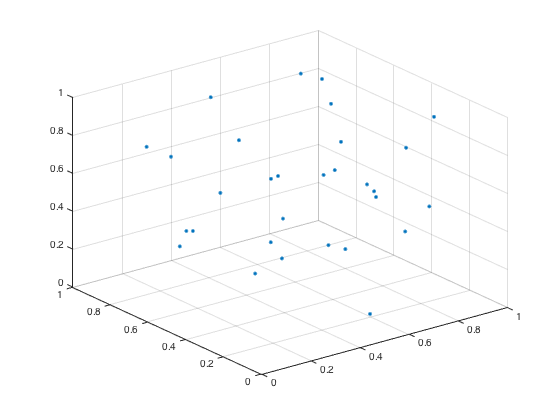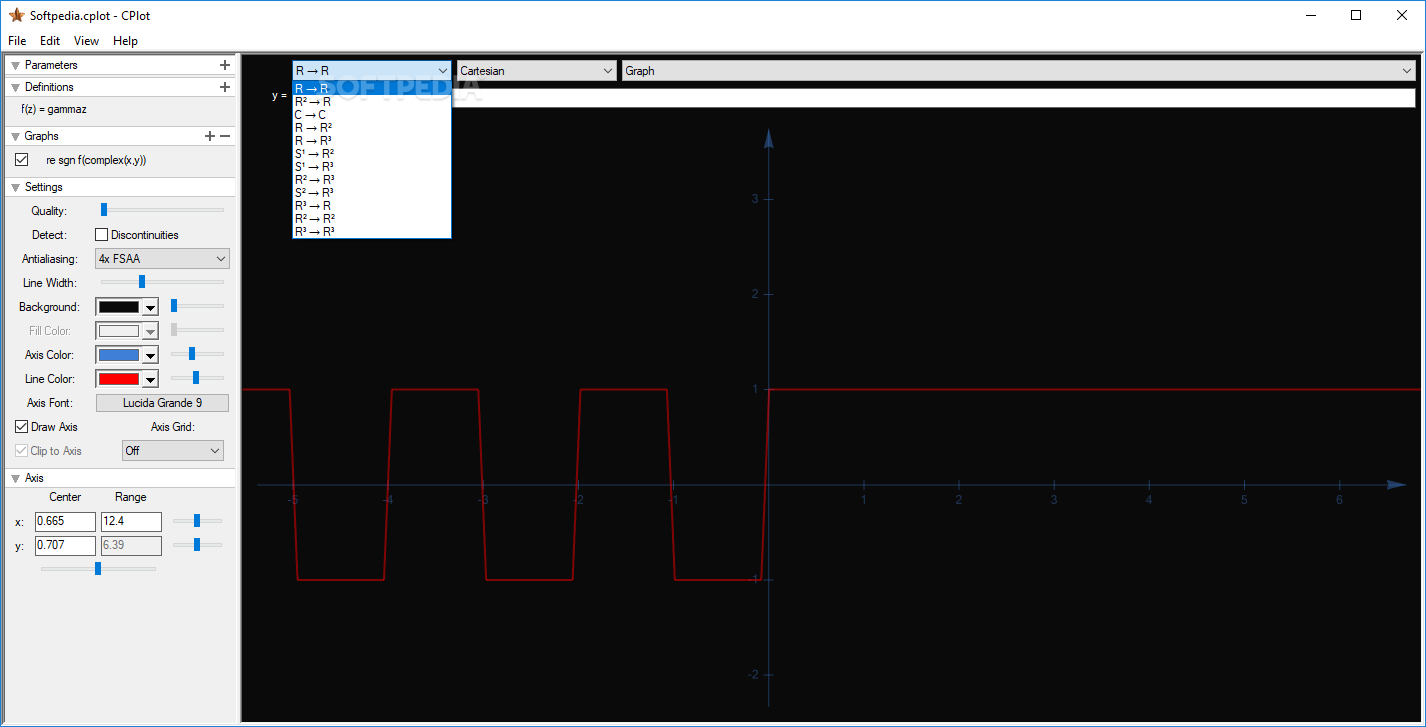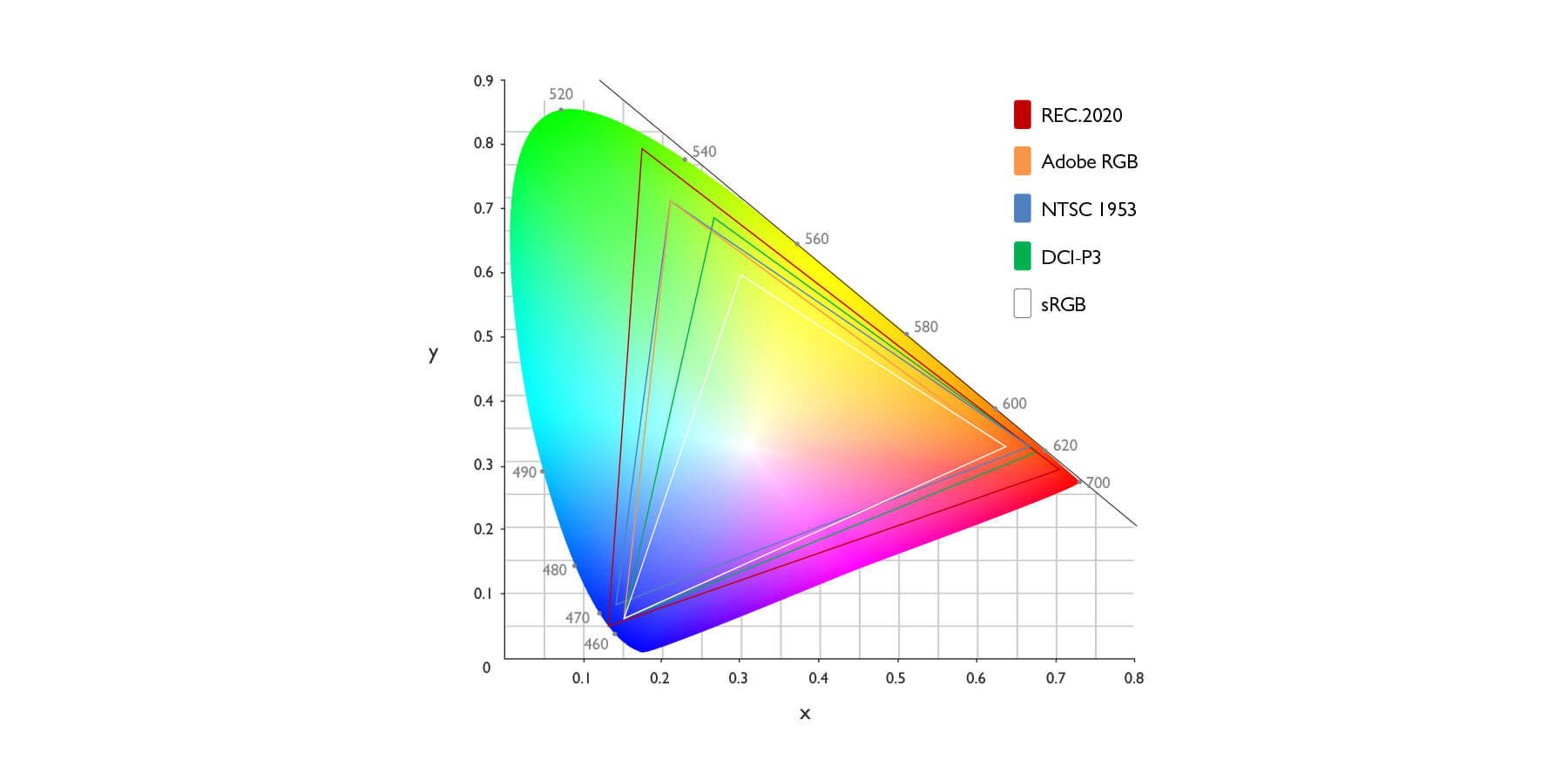

- MATLAB CPLOT GAMUT ON XY CRHOMATICITY PATCH
- MATLAB CPLOT GAMUT ON XY CRHOMATICITY CODE
- MATLAB CPLOT GAMUT ON XY CRHOMATICITY SERIES
Title('CIE Chromaticity') xlabel('x') ylabel('y') Mask=roipoly(rgb,nciex,nciey) mask=cat(3,mask,mask,mask) įigure imshow(rgb.*mask+~mask) hold on Rgb=applycform(cat(3,x,y,z),makecform('xyz2srgb')) To see only the valid colors you can uncomment the 'mask' line and comment out the other one. Also note that an srgb display can't display the whole gamut so the colors out side of this region shouldn't be trusted. The first function used can be found on the file exchange. To plot any points or contours you'll have to convert the CIE coordinates to MATLAB image coordinates (see the creation of nciex and nciey for example). I didn't plot the wavelengths around the arc, but you should be able to Wedges with the color of the common center point being white.
MATLAB CPLOT GAMUT ON XY CRHOMATICITY SERIES
Play with the reference wavelengths, wl0, if you think you might be ableīasically, instead of a single polygon, we now have a series of small Isn't identical to the plot from wikipedia, but it's close.
MATLAB CPLOT GAMUT ON XY CRHOMATICITY CODE
This code can be vectorized - I just didn't bother. % blue blue cyan green yellow orange red red % x_bar, etc are column vectors at wavelengths, wl. I finally had a chance to work on this some more. The hues are rather dark and it does not look like a CIE plot. The code you presented above has a bug : the reshape should be on x, y and I am using the following table for the tristimulus values and x, y and z : I will try to take it from here, but was wondering if you had any further Spectra of a bunch of LEDs onto a colored CIE plot like the one in the URL. I am trying to plot out CIE values (as isolated points) calculated from the Shape, marking out the locus of monochromatic emissions. The area inscribed by this shape is white/blank (needs to be coloredĪccording to the CIE coordinates). Thanks for the quick turn around (and happy new year !).Īll I get is a closed dark line defining the shape (that is what the patchĬommand does after the initial plot command plots an open curve in blue). Have to add contours / points to the plot to represent actual I have searched on file exchange, and though there are some hits thatĬome close (mainly relating to conversion of color spaces), there is Plot (the axis), while mixed colors define the interior. Monochromatic colours form the locus of the To the wavelength of light, which in turn corresponds (roughly) to theĬolour shown on the plot. The axis is in "bent" into that shape and each x axis value corresponds As I'm not sure exactly what you are trying to do I'll let you
MATLAB CPLOT GAMUT ON XY CRHOMATICITY PATCH
The colors on that patch are about the correct hue, but most are tooĭark.

What is shown on the web page, you need to make a patch: Start by downloading the 1931 CIE color matching functions, x_bar, y_bar Have to add contours / points to the plot to represent actual experimental


I have searched on file exchange, and though there are some hits that comeĬlose (mainly relating to conversion of color spaces), there is reallyĬan anyone suggest how this plot may be plotted ? After plotting, I would Monochromatic colours form the locus of the plot (theĪxis), while mixed colors define the interior. The wavelength of light, which in turn corresponds (roughly) to the colour The straight line at the bottom is called the "line of purples" and to get its xy coordinates in the diagram, you can simply trace a straight line between the point that corresponds to 380 nm (blue-violet) and the one for 730 nm (extreme red).The axis is in "bent" into that shape and each x axis value corresponds to """for each wavelength of the CMFs, you will replace X, Y, Z by x_bar, y_bar, z_bar here."""ĮDIT I forgot to mention that the spectrum locus is only the curve part of the limit. The coordinates of the spectrum locus (the limits of the human observer's gamut) are, for each wavelength, the xy coordinates that you will obtain from the XYZ to Yxy transformation, which goes, for ex. here: then check CMFs and pick one file to download. To get the points in the CIE xy 1931 chromaticity diagram that you put in your message, you have to apply the conversion XYZ to Yxy to the 3 color matching functions x_bar, y_bar and z_bar that you will find in the standard's observer CMF data, for ex. this seems to be a not-so-good formulation of a valid question.Īs boscarol pointed it out, the boundary of the human gamut is determined by the "color matching functions" that you will decide to use, which refer to the type of "standard observer" you need, i.e., 2° (1931, often used) or 10° (1964, a bit rare), or something new like proposed 2006 observers (2° or 10°)


 0 kommentar(er)
0 kommentar(er)
